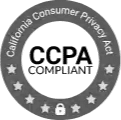Gartner CSO Conference reveals the tech stack that turbocharges sales enablement

Table of Contents
Gartner’s recent CSO & Sales Leaders Conference discussed “Adaptive Sales Strategies for a Disrupted World” with an online audience of more than tens of thousands of sales leaders, with a focus on tech solutions that can help improve sales strategies in our turbulent post-COVID conditions.
Sales enablement in particular is facing rising expectations, ranging from training sellers to improving industry-specific messaging, plus it’s still grappling with the move to a hybrid sales environment and struggling to meet constant pressure to prove RoI on its work. As Gartner analyst Daniel Hawkyard said in his talk “The Tech Stack to Turbocharge Sales Enablement Programs,” it’s difficult, if not impossible, for enablement teams to execute all these varied tasks effectively.
These expectations are becoming bigger and more urgent every quarter – Hawkyard reports that 84% of sales enablement leaders expect their budget to grow by an average of 20% this year, and an increased budget brings increased expectations and a higher value bar.
The only way to meet these expectations, Hawkyard explained, is by leveraging sales enablement technology to drive scalable and efficient best practices for the organization.
Hawkyard shared his vision of the ideal mix of solutions and tools that could help sales enablement turbocharge their ability to meet expectations and deliver value, highlighting three common challenges that sales enablement teams regularly face and explaining which types of technologies can help overcome them.
The tech for content design, production, and distribution
Sellers are overwhelmed with information and are struggling to identify and absorb the content they need. They are grappling with complex sales processes, where customers ask complicated questions and the products themselves are not easy to explain. Sales enablement teams are being pressed to give sellers more support, but ramping up content only makes it harder for sales employees to master the material before them.
The solution is to cut cognitive overload for sales employees and focus on sending only critical information in easily-absorbed formats. You want a centrally-managed pool of content that makes it easy for enablement personnel to create and distribute content across the organization.
Once it’s centralized in a sales enablement platform like Highspot, it’s easy to remove distracting information and ensure that the seller only accesses content that is accurate, up to date, and fully relevant to their needs.
The tech for frontline talent enablement
Although sellers may receive top-notch sales training and onboarding, this is rarely followed by real world opportunities to use and master those skills and information, with the result that the benefits of training are quickly lost.
Sales enablement needs to provide targeted, specific, post-training real world practice scenarios that help sellers build their selling muscle, and it needs to be done at scale. Conversational intelligence tools like Second Nature, which also demoed at the conference, help by analyzing seller conversations and providing insights into seller progress, so that enablement and managers can see where sellers need the most support.
Second Nature offers an AI-powered role play simulation that supports scalable, realistic sales conversations, reducing the burden on management, enablement, or subject-matter experts to facilitate sales enablement training. As Hawkyard showed in the presentation, the program provides visualized feedback at the end of each session to further guide sellers to strengthen their selling skills.
The tech for boosting seller efficiency and effectiveness
Today’s B2B sales teams sell high value, complex solutions to customers with multi-faceted and complicated needs. They often have to juggle a number of workflows, lowering their efficiency and efficacy. Sales employees need specific information at specific times – frequently in the middle of customer interactions – but it’s difficult for enablement to push the right knowledge at the right moment at scale. Real-time seller needs are often out of sync with front-line enablement provided.
Sales enablement needs to cut the amount of time that sellers spend on low value, time-consuming tasks like hunting for information, and think about whether new initiatives complement seller workflows, or conflict with them and ramp up complexity.
Some content delivery platforms include in-workflow prompts that guide salespeople to the right resources. Knowledge management technology like Guru helps by ensuring that sellers have easy access to the knowledge they need in real time, so they can answer complex buyer questions on the spot and without disturbing subject-matter experts.
This also helps ease the pressure to educate sales teams on every information point they might need; instead, sales enablement can just show sellers where to go to find the knowledge they need, when they need it.
The right sales technology can transform work for sales enablement
These are just three difficulties that sales enablement teams encounter on a regular basis. There are dozens and possibly hundreds more out there, but the good news is that technology is doing its best to keep up. For every sales enablement challenge, there’s a tech tool out there that can help you overcome it. The key is to build the tech stack that meets your sales enablement needs and helps teams rise to the expectations of the business around them.
Book a call with us to learn why Gartner considers Second Nature an essential part of your sales enablement tech stack!
We’re Hiring
We have positions available in our Tel-Aviv and New York offices and remote/hybrid.

 6 MIN. READING
6 MIN. READING


